Assailant -- Year 226
"But the dream, the echo, slips from him as quickly as he had found it and as consciousness comes to him (a slap and not the gentle waves of oceanic tides), it dissolves entirely. His muscles relax as the cold claims him again, as the numbness sets in, and when his grey eyes open, there’s nothing but the faint after burn of a dream often trod and never remembered." --Brigade, written by Laura
| Flora and Fauna Guide | ||
Meadow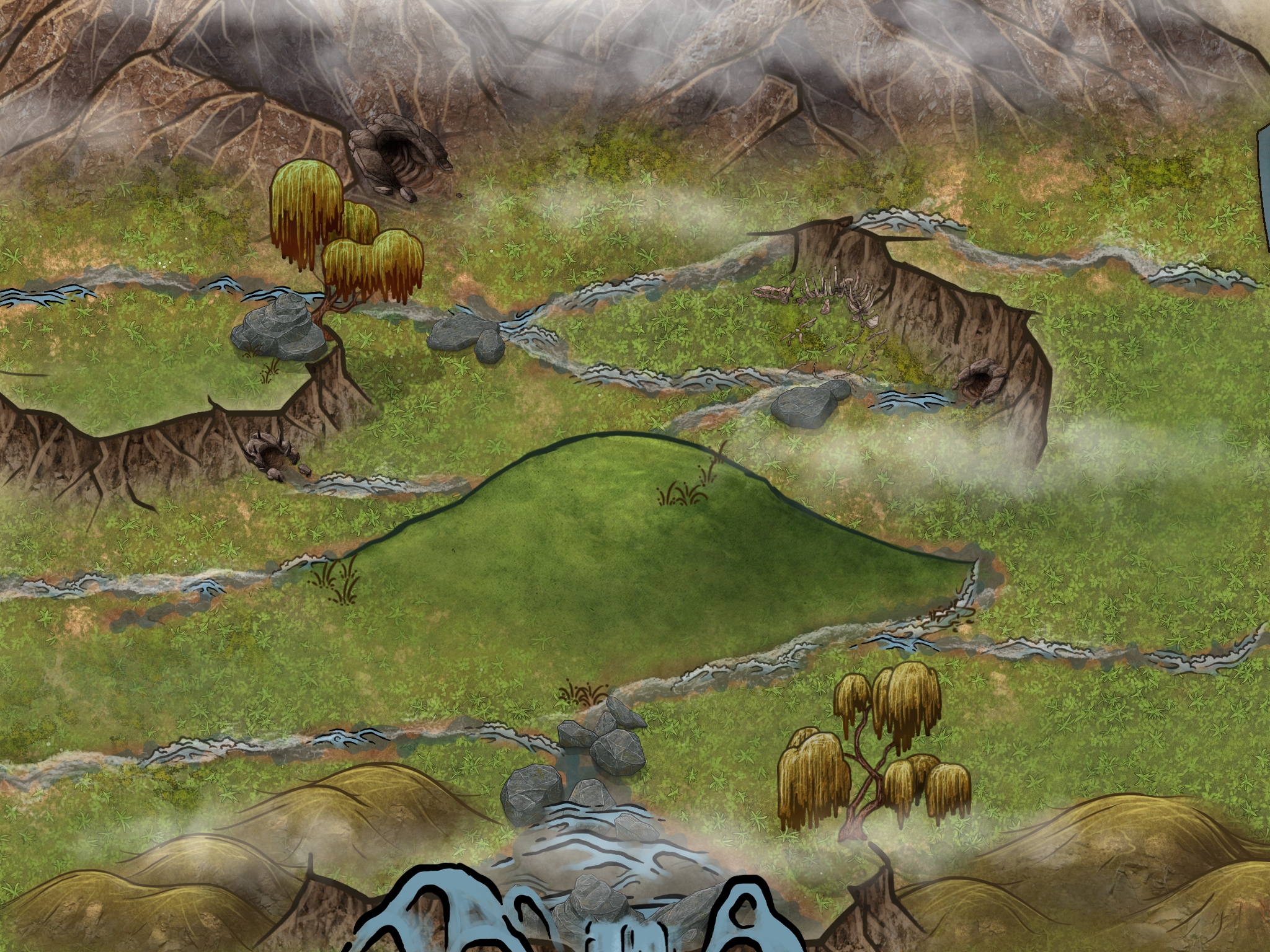 ClimatePrecipitation arrives in late summer, early spring. During severe drought wildfires may be common. Temperature ranges wildly to reflect seasonal changes, with summer heat rising well over 38C or 100F, while winter can get as low as -40C or -40F. LandscapeEver-green, broad plain with tall grasses that often reach past the average horse’s belly in height. Several creeks criss-cross the lush meadow, fed by the melted snow of the northern mountains. FloraNon-mythical FloraGoldenrod, clover, wild indigo and long-stem grasses. A few cottonwood and willow trees grow near water sources. Mythical FloraNone yet. FaunaNon-mythical FaunaQuails, skunks, and coyotes. Jack rabbits and prairie dogs, beetles and grasshoppers are plentiful. Large array of blackbirds, meadowlarks, and red-tailed hawks. Mythical FaunaNone yet. Forest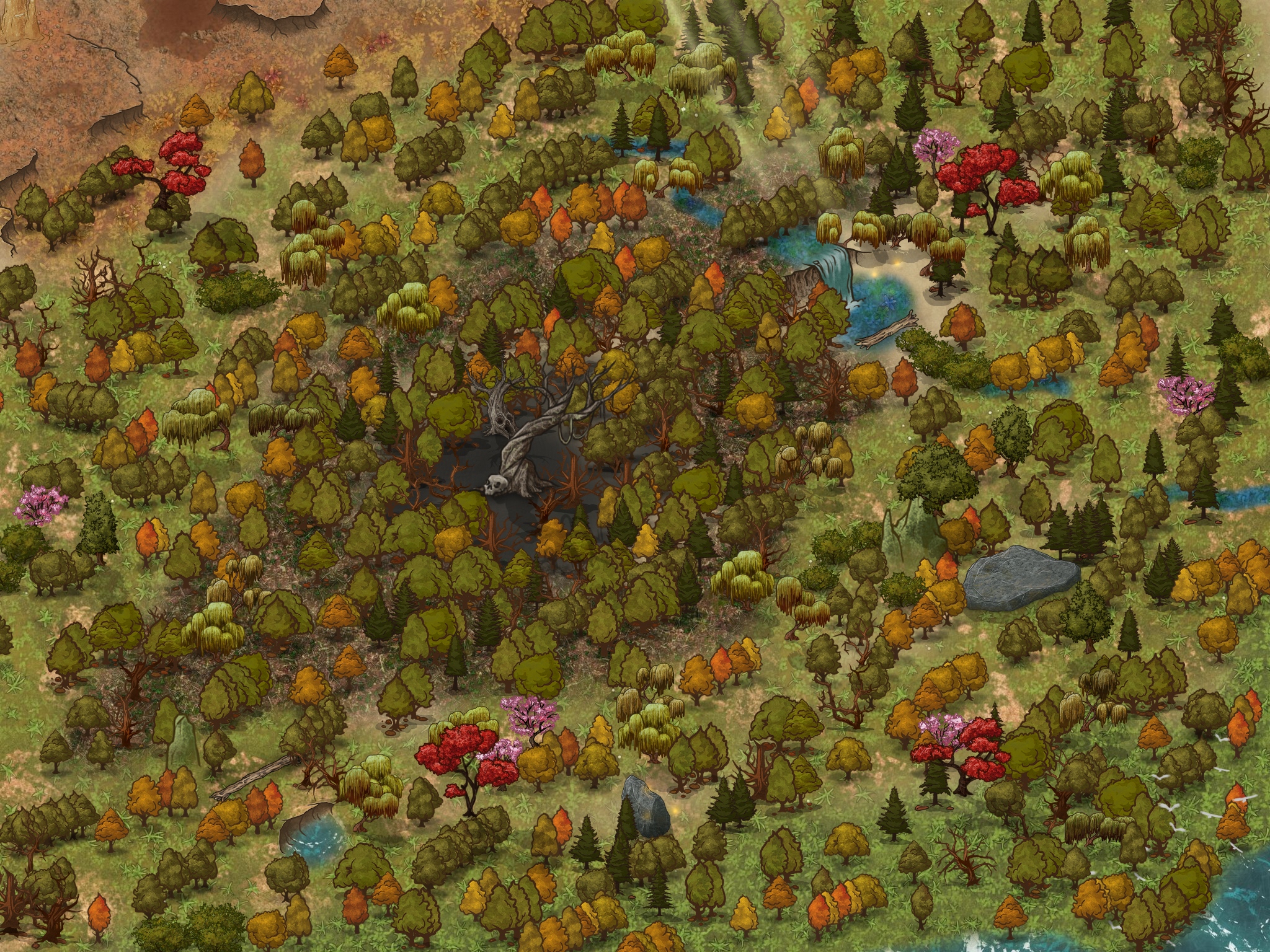 ClimateIt is always slightly colder here than the Meadow and the Field. However, the further you go into the trees, the colder it gets. Even in the heart of summer, one might freeze to death before they made it to the center of the forest. LandscapeDense, thick forest that gets progressively more ominous the deeper you go. In the heart of the forest is a dark place; sunlight hardly ever reaches the ground. There is something far more frightening than a bear or moose bull in the darkest reaches of the forest and many horses that come this far have nightmares for weeks afterward. FloraNon-mythical FloraA variety of trees: spruce, elm, birch, and poplar. Mythical FloraNone yet. FaunaNon-mythical FaunaAt the edges, deer and foxes are common sightings, hedgehogs shuffle through the leaf litter. Elk and moose pass through the established woods, wolves and cougars are not unheard of. Maybe the occasional black bear. Mythical FaunaNone yet. River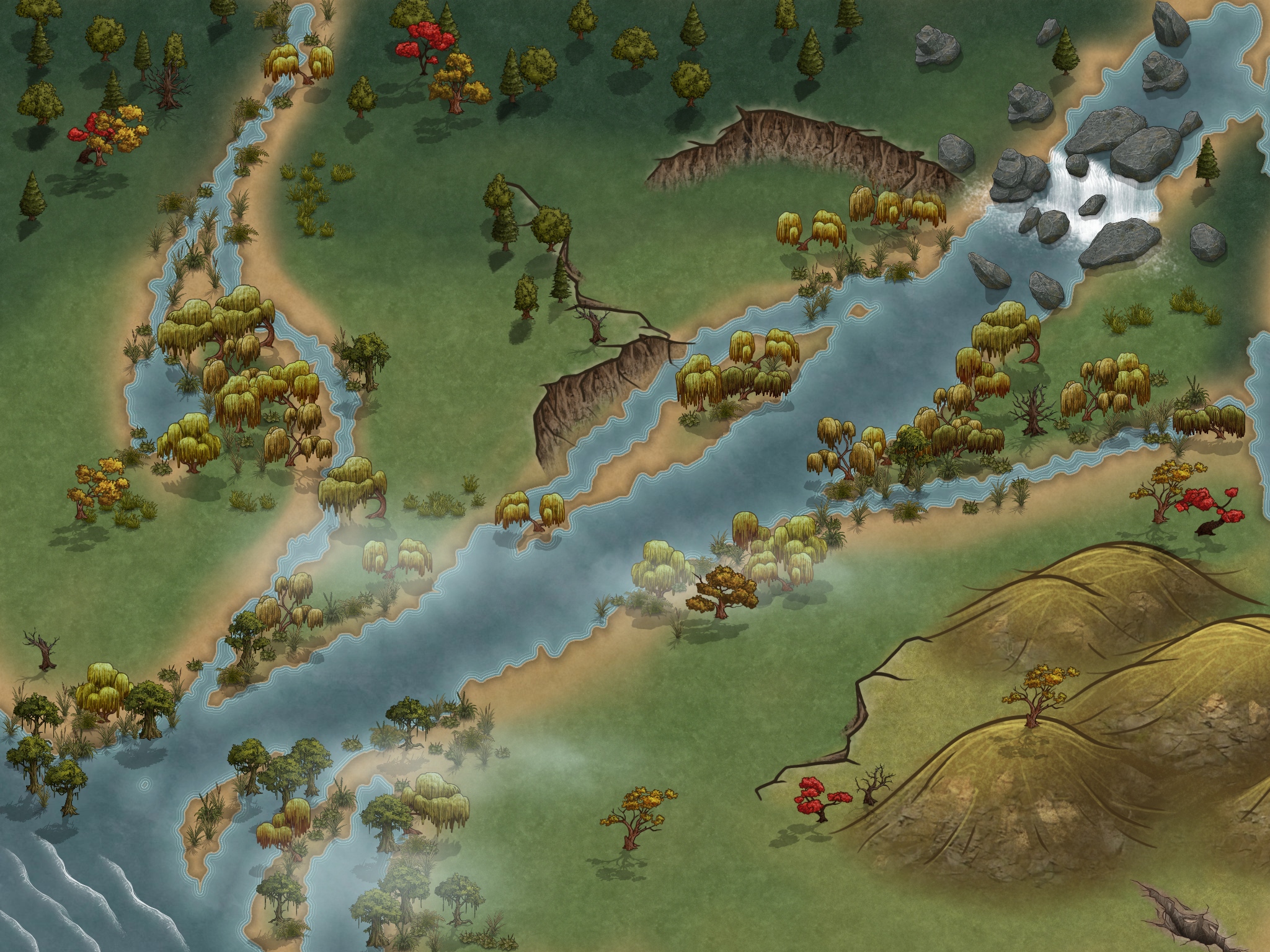 ClimatePrecipitation arrives in late summer, early spring. Temperature ranges to reflect seasonal changes, with summers being muggy and high 90s and winters bringing heavy snowfall and temperatures well below freezing. LandscapeA deep, rapid-filled river surrounded by grasses and small groups of trees. FloraNon-mythical FloraThe largest tree is a gigantic oak nearly thirty feet wide. Deciduous, turkey oak, common maple, sycamore and river birch trees line the river. Mythical FloraNone yet. FaunaNon-mythical FaunaWhite-tail deer, fox and hare can be found in abundance. The treetops are home to smaller nesting owls and songbirds: screech owls, cardinals and blue jay, mockingbirds. Common gray squirrels and non-venomous snakes such as corn snakes, garter snakes. Salmon run up the river in fall, trout and pike can be found in the water year round. Blue and green herons nest along the banks in quiet stretches as well as egret and assorted ducks. Mythical FaunaNone yet. The RuinsClimateThe temperature in The Ruins is similar to the Meadow, though it is always slightly warmer here with a bit of humidity in the air. The Ruins does not generally receive severe weather or storms, as if blocked by some unseen force, though it can occasionally. LandscapeThe Ruins is a largely flat, grassy area, though the grasses here are short. Enough trees cover the landscape that there's shade in the area. The most notable part of The Ruins though is of course the ruins themselves. They are clearly not of this world, but from a battle that raged in another realm and then broke through into Beqanna. The story of this place is one of death and destruction, and as such, it feels a bit haunted even on the sunniest of days. FloraNon-mythical FloraShort, hardy grass; standard trees such as oak and maple that bear the scars of an old battle. Mythical FloraSky and Sea Trees - Trees with trunks of coral and leaves of cloud. Most are stunted and withered. FaunaNon-mythical FaunaAlmost no life seems to dwell here, not even insects. Mythical FaunaWhispers - Shadowy whisplike creatures that repeat the last sounds of the dying. Death Scorpions - extremely large scorpions that, despite their name and size, are not poisonous or likely to sting. They are however about the size of a large dog and generally terrifying to look at. BaltiaClimateHydrothermal vents keep the water warm through the year, but spring and summer are noticeably cooler due to snowmelt coming down the River. LandscapeRocky sea floor with many caves and coral gardens, minimal open bare sand. FloraNon-mythical FloraCoral, seagrass meadows, and kelp forests. Mythical FloraGlowing coral in many colors, mostly oranges, reds, and pinks. FaunaNon-mythical FaunaFish, invertebrates, and bottlenose dolphins. Mythical FaunaFelis Marus Baltias - Tiger sharks, with a body both feline and marine. Very aggressive and dangerous, but rare. Singing Shells - When disturbed, these otherwise normal-looking mollusks will emit a loud, ear-piercing scream. If they are taken above the water, the sound is a pleasant, even soothing, hum. StratosClimateWarmed by breezes from the sea below. Winters are usually quite foggy with limited visibility between clouds. LandscapeThe clouds begin just above the water, and are of varying sizes and thickness. Magic keeps the clouds substantial, but purposeful excavation can result in characters falling through them. FloraNon-mythical FloraAir plants, bromeliads, orchids, mosses, and other ephiphytes. Mythical FloraCloud Grass - White, short, grows from the underside of clouds. Cloud Trees - White, often sprialing branches in beautiful shapes, with a canopy of clouds. FaunaNon-mythical FaunaBirds of every kind, plentiful butterflies. Mythical FaunaHippogriffs, griffins, other mythical birds, flying cloud sheep. Mountain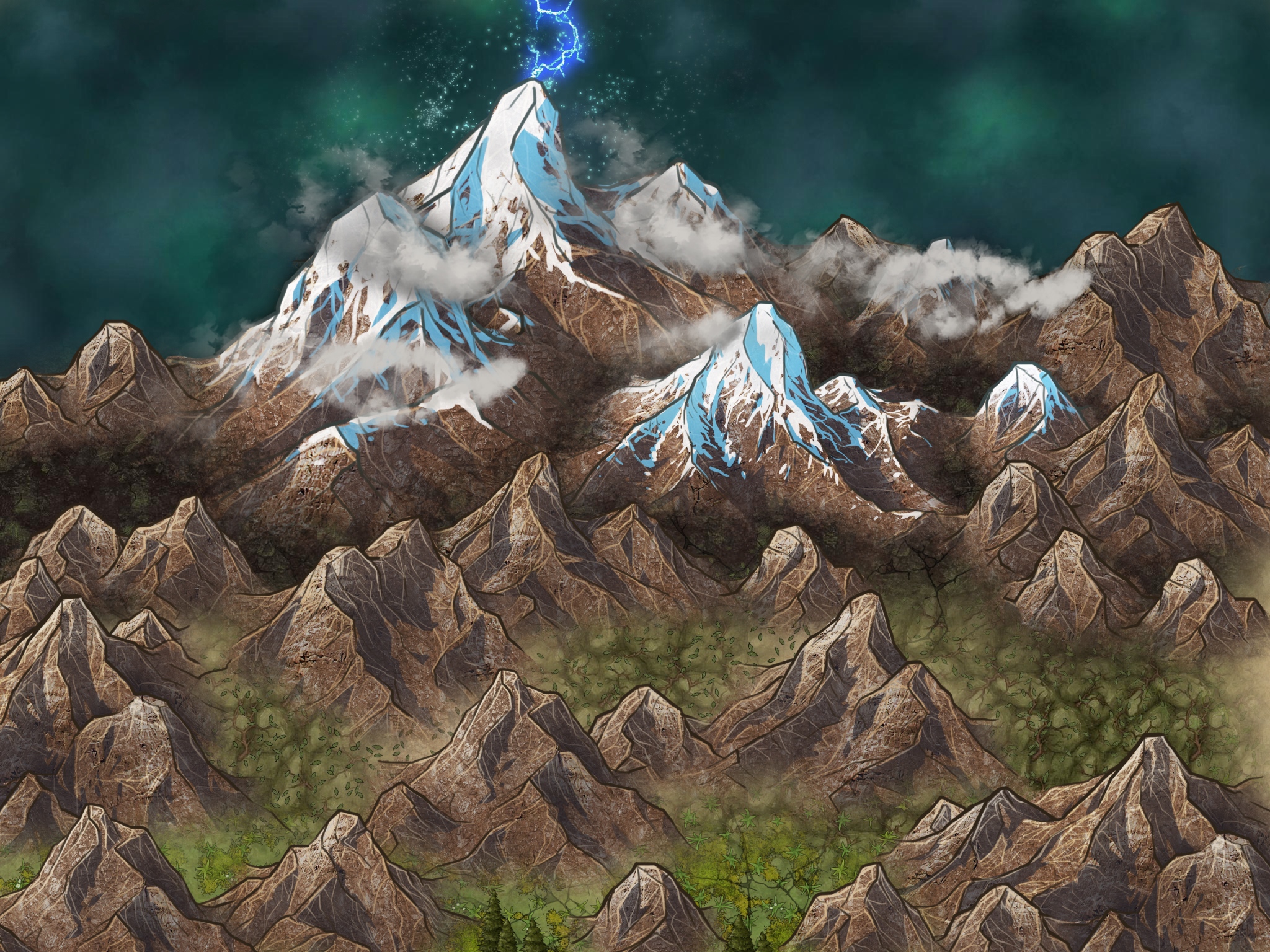 ClimateAlmost always winter conditions, due to the height of the mountain. Prone to extreme winter winds, ice, and snow as you near the peak. Some seasonal changes nearer the base. LandscapeJust a big ole mountain. FloraNon-mythical FloraConiferous trees and hardy mosses and bushes abundant nearer to the base. Only the hardest of tundra type plants as you ascend. Mythical FloraNone yet. FaunaNon-mythical FaunaMountain goats, some bands of caribou and elk roam seasonally. Snowy owls with contrasting feathers of orange or red rather than black are not common, nor are the blue-violet lemmings and furred lizards on which they feast. Mythical FaunaNone yet. The GatesClimateThe Gates maintains a rather spring-like atmosphere for most of the year, growing only moderately hotter and colder as the seasons change. Rain showers are common, but not long, and there are almost never storms in the area. LandscapeThe landscape is lush. The regular rain keeps the plant life thrilling. The kingdom is a combination of rolling green hills and flower strewn meadows in a rainbow of colors. Large weeping willows and colorful wisteria trees grow along the coast. FloraNon-mythical FloraA large variety of wildflowers that bloom all year except in the dead of winter. Lavender, which grows largely in one field. In the center of this purple meadow sits a massive tree – the Mother Tree – with branches that droop to the ground. Weeping willow and wisteria trees Mythical FloraFlowering Sleep - A red wildflower known to cause sleep and hallucinations when the pollen is inhaled. Peppermint Hearts - These plants look just like their non-mythical counterpart (bleeding hearts) except they are red and white and taste like peppermint. FaunaNon-mythical FaunaVariety of songbirds, rabbits, field mice and other small rodents, deer, and foxes. There is a standard variety of insects, including pesky flies. Of particular note are the number of bumblebees that live in the wildflower fields and the fireflies that light up the meadows at night. Mythical FaunaBlabbits - Blue glowing rabbits that appear at twilight and stay through the night. Adoraburrs - Small in size and shaped like a fuzzy ball with two large eyes and a mouth. Their fur comes in all colors and different patterns, while their eyes are black. Adoraburrs can stick to each other, as well as other objects, and it is possible to stack them. They live all over the Gates but are most commonly found in the meadows. The DaleClimateThe Dale experiences all the seasons, though winter tends to be mild here. The land gets most of its precipitation in spring and summer, which are warm and humid. Leaves begin to change in late October and the temperatures become cool but pleasant. Winter sees little snowfall that ends mid-February. LandscapeRocky hills surrounding a small meadow with a large lake, dense stands of forest in the rocks, with some larger exposed rock faces. Sometimes a few of the stones glow, which happens randomly except on the spring and winter solstices, in which case a large number of the stones glow and create a magnificent scene. FloraNon-mythical FloraMany different types of trees including pine and magnolia. Shrubs such as rhododendron in the meadows and juniper in the rocky hills. Mythical FloraLotus Trees - This tree grows lance-shaped, gray-green leaves and larger edible fruit that looks like small cherries, first red and then black at maturity. The leaves on this tree glow at night and the fruit creates a mild sense of euphoria. This tree typically grows in the forests in the rocky hills. Irrwurz - A low growing fern-like plant that causes those who step on them to become disoriented and often lost for a short period of time. FaunaNon-mythical FaunaMountain lions, hawks, roe deer, elk, and squirrels. Mythical FaunaRock Candy Sheep - More akin to mountain goats, these sheep live in the rocky areas of the Dale. Their coats are made of edible rock candy of a variety of colors and flavors. They shed their coat each spring and leave colorful variety of edible goodies behind. Be careful though, as the purple and pink candies often cause hallucinations, though they are quite tasty. Flizards - Warm-blooded, arboreal lizards with fur. They breathe small amounts of fire when threatened. The ChamberClimateThe climate here is cooler than most of Beqanna. Winters are long and chilly and summers are short and mild. There’s little precipitation here, including snow, but there’s often a dampness in the air and frequently mists shrouding the pine forest. LandscapeA dense coniferous forest surrounds a grassy area with a large river running through it. The northern coast is lined with cliffs topped with grassy moors. The southeast coast, bordering the Dale, has alpine mountains and a few small birch forests. FloraNon-mythical FloraMany pines, along with spruce, fir, and tamarack. In much of the southern forest, the conifers mingle with deciduous trees, particularly aspen, birch, sugar maple, and basswood. Mythical FloraShadow Trees - At night, the shadows of the trees move on their own and are capable of moderate trickery. They are certainly the source of many ghost stories told to children. Charred Tree - A huge, lone charred pine tree stands in the middle of the grassy area. Though not particularly mythical itself, the tree resists all attempts to heal it and never regrows. FaunaNon-mythical FaunaSmaller creatures such as squirrels, rabbits, foxes, and smaller birds - ravens are particularly common here. Larger animals, including mountain lions, bears (mostly black bears, but the occasional grizzly bear), moose, and elk. Mythical FaunaIrish Elk - Extraordinarily large deer standing at nearly 7 feet tall. There are few living in the Chamber and they are rarely spotted. It is said they can travel between worlds and if someone could just touch one, that they would be transported as well. Of course, it is nearly impossible to get close enough to one to actually touch it. White Ravens - Large birds, closer to the size of an eagle. They live deep in the pine forests to the north and can channel the voices of loved ones. Whether or not they speak words from your loved one or just steal their voice is uncertain. Pangea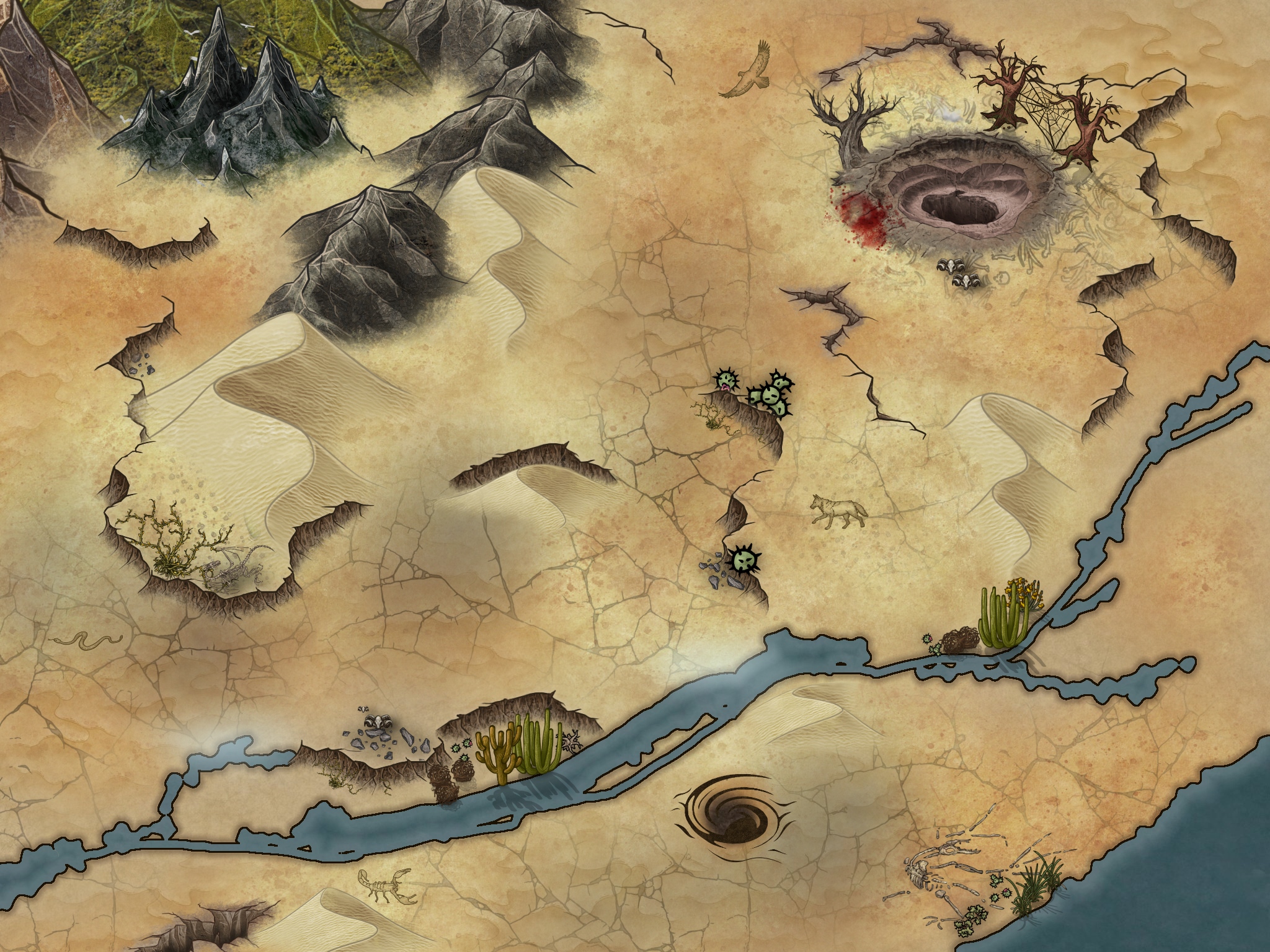 ClimateArid and warm most of the year, light snow in the winter that often doesn’t stick. Very cold at night. LandscapeYellow, red, and brown canyons make up the bulk of Pangea. Dry and dusty except for a wide, deep river in the middle of the largest valley. FloraNon-mythical FloraCoyote willow, arrowweed, seep willow, western honey mesquite, catclaw acacia, and saltcedar. One could also find remnants of dead sea plants such as coral, giant kelp, and anemone here. Mythical FloraNone yet. FaunaNon-mythical FaunaGhost fish, coyotes, spiny lizards, rattlesnakes, ring-tailed cats, bighorn sheep, bats, elk with barnacles attached to them, and vultures. Mythical FaunaRock Sheep - Gray and black sheep who, at first, appear to be dark cloud sheep, though their wool is made of rock instead of clouds. Rodents of Unusual Size - Large, cow-sized mole creatures who rarely venture from their cavernous tunnels. Lobsters who have evolved to have lungs, fire-breathing chuckwallas, and mule deer with coral horns. |
||
